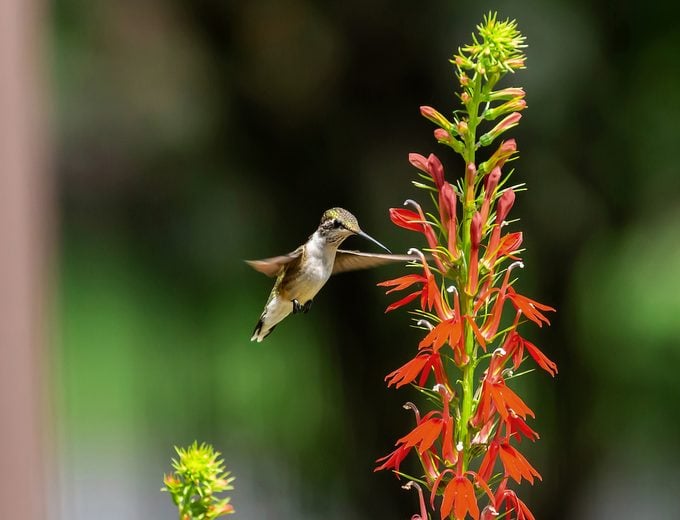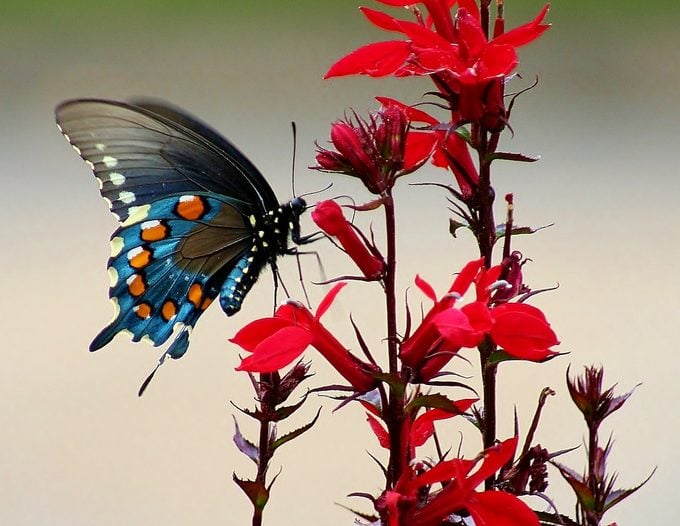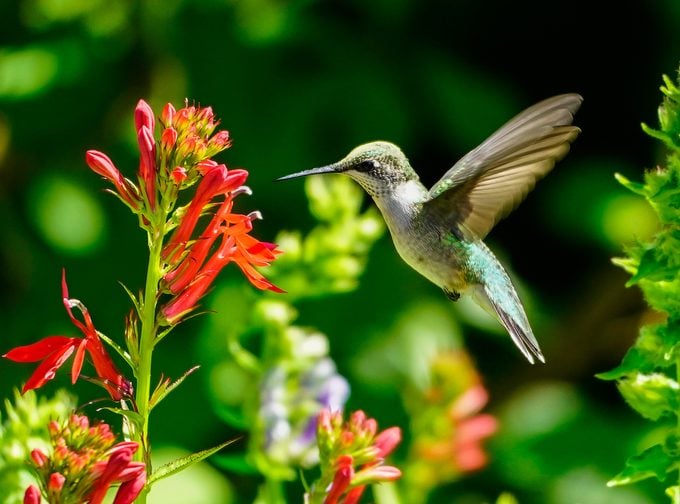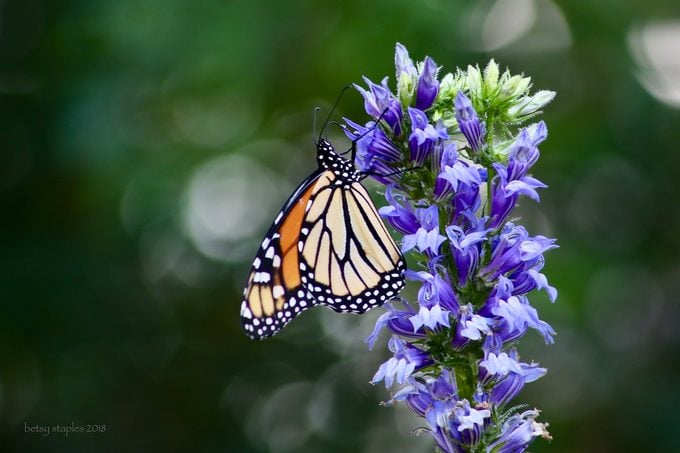Lobelia (Cardinal Flower) Attracts Butterflies and Hummingbirds
Updated: Mar. 20, 2024
Cardinal flower is a good native plant for a pollinator garden with moist soil. Butterflies and hummingbirds flock to lobelia's blooms.
On This Page
Cardinal Flower Pollinator Benefits

Looking for an interesting North American native plant with striking color that attracts butterflies and hummingbirds? Cardinal flower (Lobelia cardinalis) might be the answer, though it doesn’t work for every location. If you can provide good wet soil and a little afternoon shade, though, the spikes of cardinal flower will reward you with visits from plenty of pollinators.
Eye-catching stalks of vibrant scarlet, white or rose flowers pop in a summer garden from July to September. Deer and rabbits usually avoid the plant. It adds height to edges and thrives in moist, challenging growing conditions like rain gardens, along ponds and in wet meadows.
Check out the best red flowers that attract hummingbirds.
Cardinal Flower Care and Growing Tips

- Scientific name: Lobelia cardinalis
- Growing zones: 3 to 9
- Attracts: Butterflies, hummingbirds, bees
- Light needs: Prefers partial shade; place it in a spot with morning sun and moist soil
- Size: Shoots 2 to 4 feet high, spreads up to 2 feet wide
- Grown for: Nectar-packed, showy blooms hummingbirds love
- Foliage: Tall stalks with long, thin, dark-green leaves
- Cultivars to try: Pink Flamingo is a dazzling pink flowering beauty; sun-loving Queen Victoria adds drama with scarlet blooms and dark foliage
Cardinal flower is native to the eastern United States, where it grows in wet woodlands. The flower spikes can reach 4 feet tall. It will re-bloom throughout the summer, especially when spent spikes are trimmed back to encourage new growth. These vibrant blooms add eye-popping color to your shady areas.
The plant does need consistently moist or wet soil to thrive, so if you have a soggy spot in the yard, or are looking to grow something along the edge of a backyard pond, this is a great solution. Surround it with mulch to retain moisture during summer and protect its root system during cold northern winters.
Did you know: This plant is named for the red robes worn by Roman Catholic cardinals, not the popular redbirds in your backyard.
Is Cardinal Flower a Perennial?

Cardinal flower is a short-lived perennial in the bellflower family. It spreads by basal rosettes at the base of the plant, which can be divided every few years, and also by seed.
Psst—these are the best perennials to grow for hummingbirds.
Great Blue Lobelia

Great blue lobelia is cardinal flower’s blue counterpart (Lobelia siphilitica, Zones 4 to 9). The two are very eye-catching when planted together. Great blue lobelia prefers a bit more sun but still requires moist soil. If you’re looking to attract hummingbirds, though, red cardinal flower is your best bet.
Sources
- National Gardening Association — Pink Flamingo
- National Gardening Association — Queen Victoria
- American Meadows – Cardinal flower
- North Carolina Cooperative Extension — Great blue lobelia
- University of Wisconsin-Madison Division of Extension — Cardinal Flower, Lobelia cardinalis
Why Trust Us
For nearly 30 years, Birds & Blooms, a Trusted Media Brand, has been inspiring readers to have a lifelong love of birding, gardening and nature. We are the #1 bird and garden magazine in North America and a trusted online resource for over 15 million outdoor enthusiasts annually. Our library of thousands of informative articles and how-tos has been written by trusted journalists and fact-checked by bird and garden experts for accuracy. In addition to our staff of experienced gardeners and bird-watchers, we hire individuals who have years of education and hands-on experience with birding, bird feeding, gardening, butterflies, bugs and more. Learn more about Birds & Blooms, our field editor program, and our submission guidelines.




















